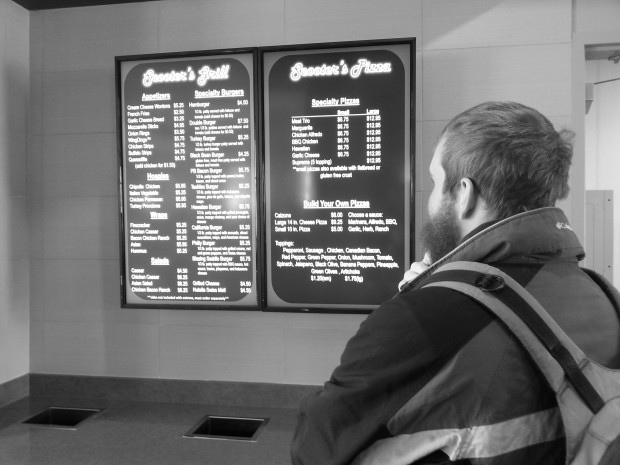
Today, I had my first “Dayne” sandwich of the semester at T’s.
Riveting stuff, huh? Well, to me, this is significant because while we have just begun a new semester, I have promised myself to eat healthy … or at least healthier.
For me, this means only one trip to T’s per week. In semesters past, I’ve made the greasy chicken sandwich with bacon my go-to meal on campus, but now I’m thinking a little differently.
During January Term, I went on a VISION trip to Quail Springs Permaculture in Southern California. I’ll spare everyone the minute-to-minute details, but one thing I took from the trip was the idea of “artisan foods.”
The main principle behind “artisan” is eating food that is not mass produced and processed. This can mean organic, but, just as importantly, it can be local and responsible.
I know what many are thinking right now; “It’s way too expensive to eat that way in college.” Maybe this is true for some, but finding healthier options than the jumbo bag of Tyson chicken nuggets from Sam’s Club is a step in the right direction.
Aside from financial reasons, why is it so hard to commit to a healthier lifestyle? Part of the problem is the stigma of healthy, less-processed foods being unmasculine.
One of the leaders on my VISION trip has worked at Scooter’s and shared an interesting example of the masculinization of food. She described a situation in which a group of male St. Thomas students came to the counter to order cheeseburgers and fries. One of the guys purchased a Caesar salad, which resulted in him being teased by his peers for “trying to watch his figure.”
While this is just one example, I think it speaks to the bigger problem of societal views on what is acceptable for men to eat.
Just take a stroll through the grocery store and look at the different branding strategies used for food. What I have noticed is that so many unhealthy options are marketed as the “manliest.”
My two favorite examples even have the word “man” in the title. The classic “Manwich” sloppy joes come straight from a can, but the biggest offender is the Hungry-Man frozen dinners. Men’s Health ranked the Hungry-Man Classic Fried Chicken as the worst frozen entree in America. Looking at the nutritional facts, one meal contains 1,020 calories, but what is even more alarming is the 1,570 milligrams of sodium.
I’m not a nutritionist, but it seems pretty backward when the sodium numbers are higher than the calorie count. These companies push a message that for men, the quantity of food is what’s important, and that you shouldn’t care about ingredients or where it is from.
My point with all of this is that eating shouldn’t be a masculine or feminine thing; it’s just a simple fact, a daily activity we all must participate in to sustain ourselves.
After spending 10 days in Southern California and eating meat only three times throughout, I felt absolutely amazing. My level of energy was higher, and I can easily say that I never felt hungry or in need of a snack in between meals. The food was home grown and thoughtfully prepared. Traveling home with a long layover in Houston, I stopped for a burger at a sit-down chain restaurant for dinner. I flew back shortly after the meal, only to find my stomach growling before I even landed.
This put the nail in the coffin for my perception of “quality over quantity” for food. The decision is my own, not one generated by what is deemed acceptable by my peers and society.
Alex Goering can be reached at goer8777@stthomas.edu.


